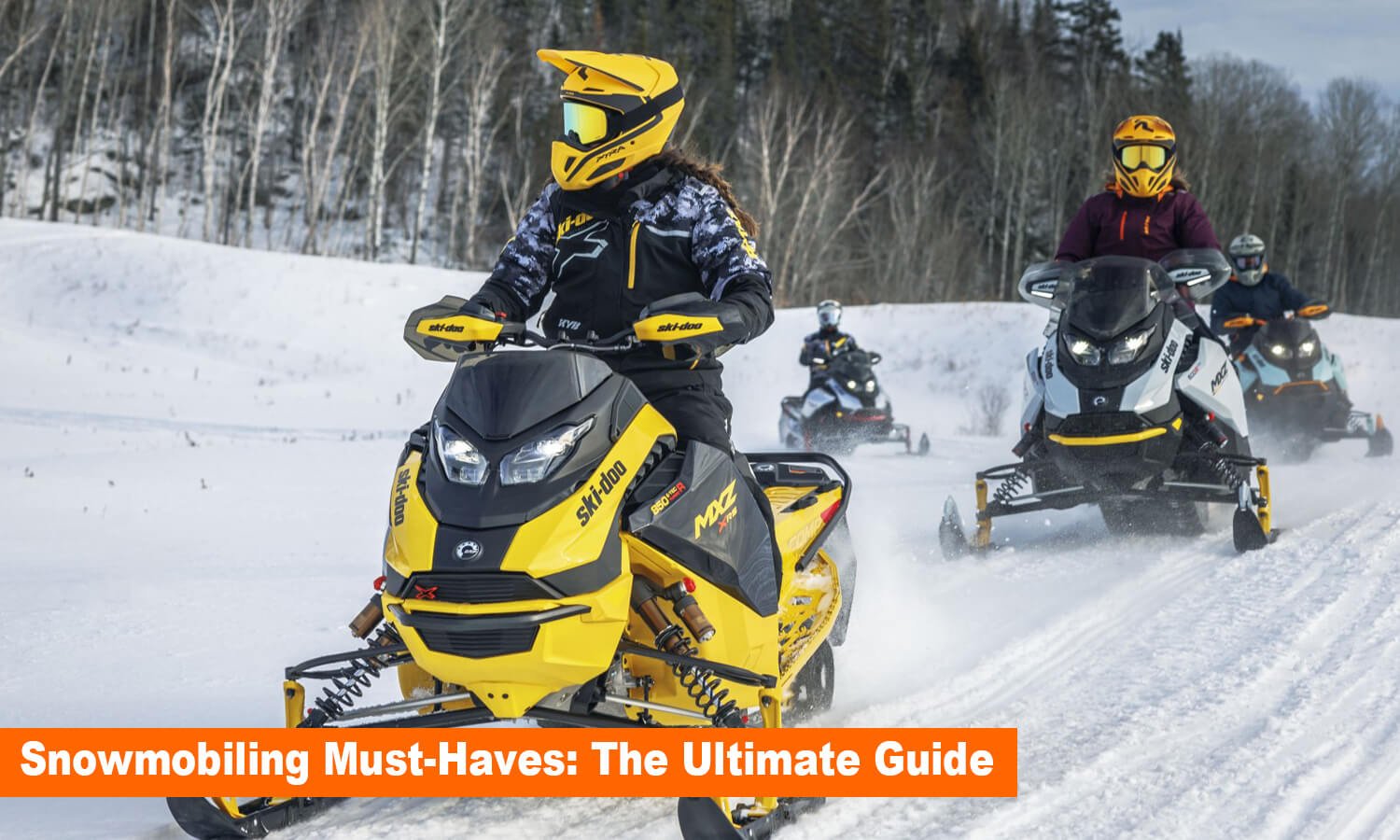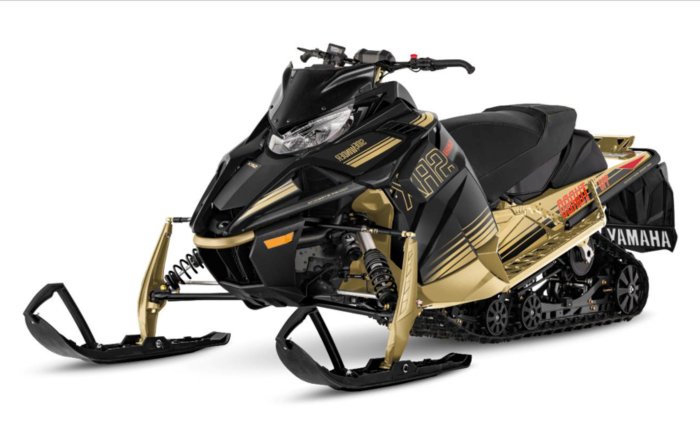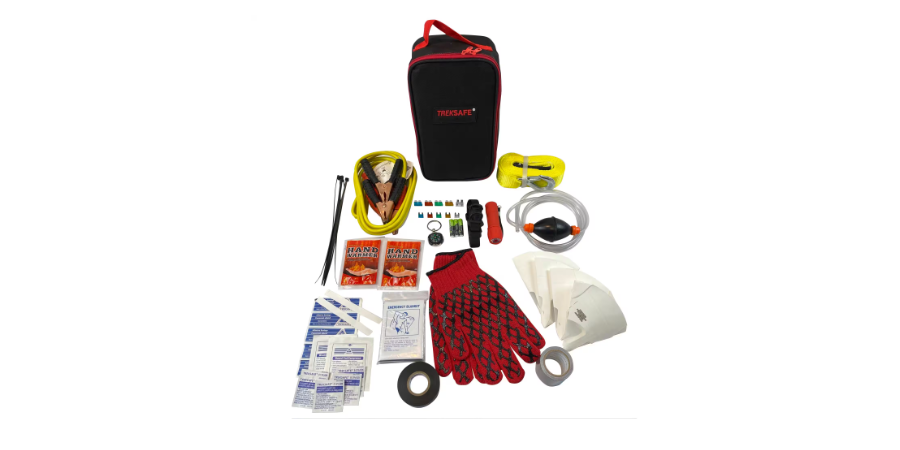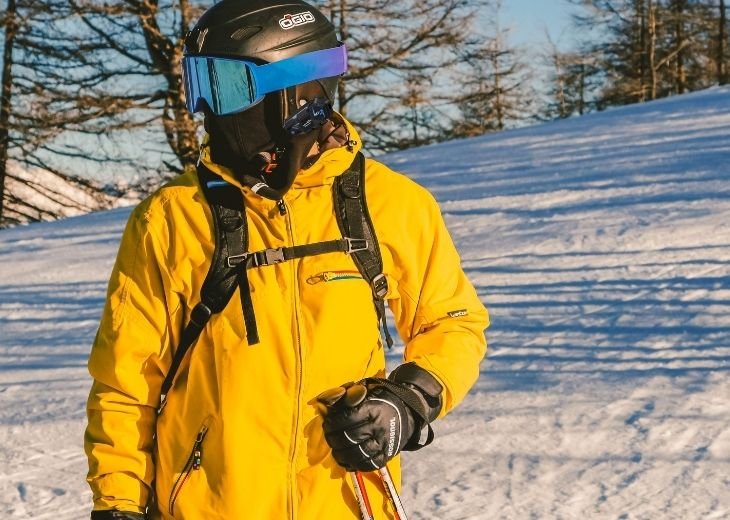Picking the perfect brake pads for your ride has an influence on how safe you are, how well your whip handles, and what you’ll shell out over time. You’ve got a whole menu, from wallet-easy organic pads to fancy ceramic or semi-metallic types. To get why budget brake pads ain't the same as the pricier […]

22 Snowmobiling Must-Haves: The Ultimate List
Snowmobiling is an exhilarating winter sport that combines speed, adventure, and the beauty of snow-covered landscapes. To enjoy this activity safely and comfortably, having the right gear is essential. This guide will walk you through the snowmobiling must-haves for your next snowmobiling.
Table of Contents
Quick view about the snowmobiling must have gear and essentials:
- Base Layers
- Insulating Layers
- Outer Layers
- Gloves
- Boots
- Socks
- Helmet
- Goggles
- Avalanche Beacon
- Protective Gear
- Snowmobile
- Spare Parts and Tools
- Fuel and Oil
- GPS and Maps
- First Aid Kit
- Survival Gear
- Snacks and Water
- Snowmobiling Helmet Communication System
- Personal Locator Beacon (PLB)
- Heated Gear
- Backpack
- Camera or Action Cam
1. Clothing Essentials

snowmobile clothing essential - snowmobiling must-haves
01. Base Layers
Start with a moisture-wicking base layer. These garments help regulate your body temperature and keep you dry.
Look for materials like merino wool or synthetic fabrics that draw sweat away from your skin.
02. Insulating Layers
The insulating layer is crucial for retaining body heat.
Fleece jackets or down vests are excellent choices. They provide warmth without adding too much bulk, allowing you to move freely.
03. Outer Layers
Your outer layer should be windproof and waterproof. A good snowmobile jacket and pants will protect you from the elements. Look for options with ventilation zippers to help regulate temperature during intense rides.
04. Gloves
Invest in high-quality snowmobile gloves. They should be insulated, waterproof, and have good grip. Consider gloves with touchscreen compatibility for easy smartphone use.
05. Boots
Snowmobile boots must be warm, waterproof, and offer excellent traction. Look for boots with a removable liner for easy drying after a day in the snow.
06. Socks
Wear thick, moisture-wicking socks. Wool or synthetic blends are ideal to keep your feet warm and dry.
2. Safety Gear

snowmobiler wearing the helmet and goggle to make sure safety
07. Helmet
A helmet is non-negotiable. It protects your head in case of falls or collisions. Choose a DOT-approved snowmobile helmet with a full-face shield for maximum protection against wind and debris.
08. Goggles
Goggles are essential for eye protection. They prevent snow, wind, and UV rays from impairing your vision. Opt for goggles with anti-fog and UV protection features.
09. Avalanche Beacon
If you plan to snowmobile in backcountry areas, an avalanche beacon is crucial. This device can help rescuers find you in case of an avalanche. Make sure you know how to use it properly.
10. Protective Gear
Consider wearing protective gear like knee pads, elbow pads, and a chest protector. These can reduce the risk of injury during falls or collisions.
3. Snowmobile Equipment

a yamaha srx 24 snowmobile - snowmobiling must haves (Source: Yamaha Motorsports)
11. Snowmobile
Ensure your snowmobile is in good working condition. Regular maintenance checks before heading out are vital. Pay attention to oil levels, brakes, and track tension.
Besides, there are different kinds of snowmobiles in the market. If you are a beginner, it is necessary to choose the one best suitable for you.
12. Spare Parts and Tools
Carry essential spare parts like drive belts, spark plugs, and a toolkit. These can be lifesavers if you encounter mechanical issues far from help.
13. Fuel and Oil
Always bring extra fuel and oil. Snowmobiles can consume a lot of fuel, especially in deep snow or during long rides.
14. GPS and Maps
A GPS device or smartphone app with offline maps is crucial for navigation. Familiarize yourself with the area and plan your route in advance.
4. Emergency Supplies

snowmobile emergency gear - snowmobiling essentials
15. First Aid Kit
A compact first aid kit is a must. It should include bandages, antiseptic wipes, pain relievers, and any personal medications.
16. Survival Gear
Pack survival essentials like a space blanket, fire starter, and a multi-tool. These items can be invaluable if you find yourself stranded overnight.
17. Snacks and Water
Stay energized and hydrated. Bring high-energy snacks like protein bars, nuts, and dried fruit. A hydration pack or insulated water bottle is essential to prevent dehydration.
5. Communication Devices

A man is using Fodspots Bluetooth helmet intercom to communicate with his partner
18. Snowmobiling Helmet Communication System
Cell service can be unreliable in remote areas. Snowmobiling communication systems allow you to connect with your group even without cell coverage.
Prepare a snowmobile helmet communication system for your next trip
19. Personal Locator Beacon (PLB)
For added safety, consider a personal locator beacon. This device can send a distress signal with your location to search and rescue services.
6. Comfort and Convenience Items
20. Heated Gear
Heated gloves, jackets, and insoles can make cold rides much more comfortable. Look for battery-powered options that provide consistent warmth.
21. Backpack
A sturdy, waterproof backpack is essential for carrying your gear. Choose one with multiple compartments to keep items organized and accessible.
22. Camera or Action Cam
Capture your adventure with a camera or action cam. Look for waterproof models that can withstand cold temperatures. Also, there are helmet intercom with camera, such as the Fodsports FX30C Pro, which combine a communication system and a camera function. This will help you reduce the number of gear, and you will not need to worry about handing various devices on your helmet while snowmobiling.
7. Environmental Considerations
Tread Lightly
Respect the environment by sticking to designated trails. Avoid disturbing wildlife and pack out all trash.
Noise Reduction
Opt for quieter snowmobile models or install noise reduction kits. This minimizes your impact on the environment and enhances your enjoyment of nature.
FQAS About Snowmobiling Must-Haves
What does every snowmobiler need?
Every snowmobiler needs the following items:
- A reliable snowmobile, a helmet for safety, helmet communication system
- Some warm clothing including gloves and boots, goggles for eye protection
- First aid kit, a GPS or map for navigation, and tools for basic repairs.
- Check the weather conditions and ensure you have adequate fuel before your snowmobiling trip.
Is snowmobiling hard on the body?
Snowmobiling can be physically demanding, involving constant movement and balance.
It requires strength and endurance, especially on rough terrain. Riders may experience muscle strain from steering and handling the machine.
Proper technique and conditioning can help minimize physical stress and improve the overall experience.
What are 5 safety tips to follow when snowmobiling?
Here are five safety tips for snowmobiling:
- Wear Proper Gear: Always wear a helmet, goggles, and layered clothing to stay warm and protected.
- Stay on Marked Trails: Follow designated paths to avoid hazards like thin ice or hidden obstacles.
- Check Weather Conditions: Know the forecast to avoid getting caught in storms or extreme cold.
- Maintain Your Snowmobile: Regularly inspect and service your snowmobile to ensure it's in good working condition.
- Ride with a Buddy: Never go alone; having a partner increases safety in case of emergencies. Wear snowmobiling intercom during the adventure to make sure you and your friend can communicate.
Why do snowmobilers wear backpacks?
Snowmobilers wear backpacks to carry the snowmobiling essential items. These include extra clothing, tools for repairs, a first aid kit, food, water, and emergency supplies like a flashlight or GPS.
Backpacks ensure they are prepared for unexpected situations. Also, these essential gear allow them to enjoy their ride safely and comfortably.
Conclusion
Snowmobiling is a thrilling way to explore winter landscapes, but preparation is key.
With the right clothing, safety gear, equipment, and emergency supplies, you can enjoy the ride with peace of mind.
Remember, safety should always be your top priority. Equip yourself well, respect the environment, and have fun out there!
By following this guide, you’ll be ready for anything the snow throws your way.
Whether you’re a seasoned rider or a newbie, you should know these snowmobiling must-haves.
These essentials will enhance your snowmobiling experience, ensuring you stay warm, safe, and prepared for every adventure.
Now, it is time that you should check your gear for the next snowmobiling experience. If there are some snowmobiling essentials you have not owned, then consider add them in your package. Maybe you will not use it this time, but who knows, someday you may need it.
After the gear get prepared, it is time to plan and pack a snowmobile trip. Our article How to Plan and Pack for a Snowmobile Camping Trip? may help you find some ideas.

Motorcycle mechanic, writer. Interested in motorcycle gear for years. Like to stay up to date with the newest products and techniques of the motorcycle.
E-bikes have transformed into more than just gadgets to help you get around. Now, they're speed demons that can go toe-to-toe with motorbikes. It’s 2025, and these speedy machines have gotten a huge boost from better motors, more powerful batteries, and sleek designs that cut through the air like a knife. Let’s dive into the […]
Many riders who aren't so tall or ladies just starting to ride bikes need to pick out the best Motorcycles for Short Riders and Women. They gotta look for three key things: a seat that's not too high up, a bike that's not too heavy, and something that looks good enough to give them confidence. […]
As we accelerate into 2025, motorbikes are getting a serious tech upgrade. They’re all about safer rides and more fun on the road. Even if you’re a pro or just starting, kitting out your two-wheeler with cool tech stuff is a game-changer. Check out these ten top motorcycle gadgets each motorcyclist will want in 2025. […]
Getting around the city every day can be super annoying. You've got traffic like molasses nowhere to park, fuel prices through the roof, and buses stuffed like sardine cans make heading to the office a real pain. For loads of folks, getting a motorcycle is a pretty slick move—they’re nimble, cost-effective, and perfect for squeezing […]
Rider safety demands motorcycle helmets. Yet, riders still clash over picking full-face vs open-face helmets. Full-face ones take the win for protecting in crashes, but open-face models charm folks who want cool looks better air, and that old-school vibe. This guide dives into the latest research, technological advancements, and real-world insights to help you decide […]


Very helpful Snowmobiling Must-Haves article! I think this blog has list almost all the essential gear we will need for the snowmobilers.
I recommend you to bookmark this page, you may need it in the future!